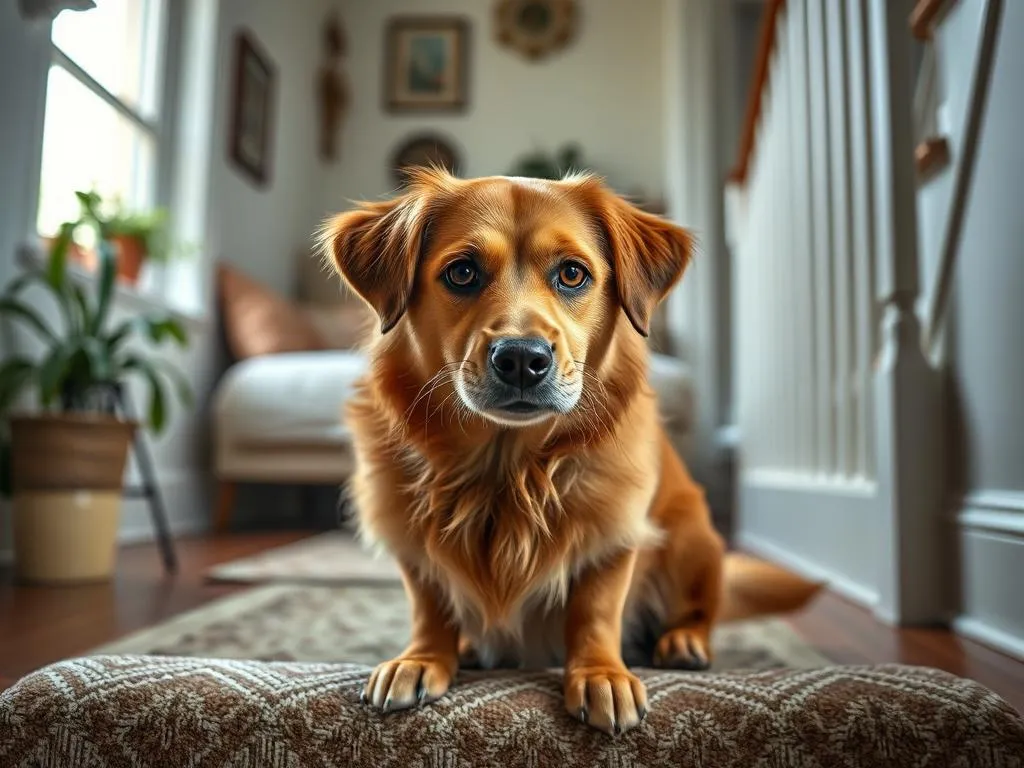
Introduction
As a loving pet owner, you may find yourself facing a common dilemma: how to keep your dog from going upstairs. Whether it’s due to safety concerns, behavioral issues, or the desire to maintain a clean living space, establishing boundaries for your pet is crucial. In this article, we will explore various methods and techniques to effectively prevent your dog from accessing the upstairs area, ensuring a harmonious home for both you and your furry friend.
Understanding the Reasons
Safety Concerns
One of the primary reasons for wanting to prevent your dog from going upstairs is safety. Stairs can pose significant hazards, especially for small or older dogs that may struggle with balance. Slippery floors can lead to falls and injuries, not only for your pet but also for family members who may be carrying items or navigating the space. By restricting access, you can help ensure a safer environment for your dog and your household.
Behavioral Issues
Allowing unrestricted access to all areas of the home can lead to unwanted behavioral problems. Dogs thrive on structure and rules, and when they do not have clear boundaries, they may exhibit behaviors like excessive barking, anxiety, or even destructive tendencies. Establishing rules about going upstairs can contribute to a well-behaved and balanced pet, making it essential to address this aspect of your dog’s training.
Maintenance and Cleanliness
Another factor to consider is maintenance and cleanliness. Pet hair, dirt, and other messes can accumulate more rapidly in upstairs areas where your dog has free reign. By preventing access, you can better manage the cleanliness of your home and reduce the frequency of deep cleaning sessions. This not only makes your living space more pleasant but also promotes a healthier environment for both you and your dog.
Assessing Your Dog’s Behavior
Observing Patterns
Before implementing strategies to keep your dog from going upstairs, it’s important to assess their behavior. Observe your dog’s interactions with the stairs and note any patterns. Does your dog rush upstairs when they hear certain noises or if someone is upstairs? Understanding the triggers that lead to your dog wanting to go upstairs will help you tailor your approach.
Understanding Your Dog’s Personality
Recognizing your dog’s personality can also play a significant role in your strategy. Different breeds and temperaments react differently to boundaries. For instance, some breeds are more independent and may push the limits, while others may be more obedient and easily trained. Tailoring your approach based on your dog’s characteristics will increase the chances of successfully preventing them from accessing the upstairs area.
Methods to Prevent Access
Physical Barriers
Baby Gates
One of the most effective physical barriers to keep your dog from going upstairs is the use of baby gates. There are various types of baby gates available, including pressure-mounted and hardware-mounted options. When choosing a gate, ensure it is tall enough that your dog cannot jump over it and sturdy enough to withstand any attempts to push through. Installation should be straightforward; just make sure it’s securely fastened to avoid any accidents.
Door Closures
Another simple approach to restrict access is by using doors. Keeping doors closed can be an effective way to prevent your dog from wandering upstairs. However, this method does have its pros and cons. While it is a straightforward solution, it may require constant vigilance to ensure doors remain closed, and it can be inconvenient for family members moving between floors.
Training Techniques
Command Training
Teaching your dog commands like “stay” or “leave it” can be instrumental in establishing boundaries. Start by practicing in a controlled environment. For example, use the command “stay” while your dog is at the bottom of the stairs. Gradually increase the distance and duration of the command, rewarding your dog with treats and praise for compliance. Consistent practice will help your dog understand the importance of staying downstairs.
Positive Reinforcement
Positive reinforcement is a powerful training method that utilizes treats and praise to encourage desired behavior. When your dog remains downstairs, reward them with a treat or affection. This not only reinforces the behavior but also helps create a positive association with staying on the lower level of your home.
Behavioral Modification
Redirecting Attention
Engaging your dog in activities that keep them occupied downstairs can also help prevent them from wanting to go upstairs. Consider providing toys, puzzles, or interactive games that can be enjoyed on the lower level. Activities like fetch or tug-of-war can be great for burning off excess energy, making your dog less interested in exploring upstairs.
Desensitization
Desensitization can be another effective method to help your dog adjust to the idea of staying downstairs. Gradually introduce your dog to the stairs without allowing them access. You can do this by sitting near the stairs with your dog and rewarding them for remaining calm and staying at a distance. Over time, they will learn that the stairs are not a place for them to go, fostering a positive association with the downstairs area.
Creating a Comfortable Downstairs Environment
Designated Dog Space
Creating a cozy area for your dog downstairs can significantly reduce their desire to go upstairs. Set up a designated dog space with their bed, toys, and any other comfort items they enjoy. This space should be inviting and tailored to your dog’s preferences, ensuring they feel safe and comfortable in their surroundings.
Engaging Activities
To keep your dog entertained and engaged, provide a variety of toys and puzzles that stimulate their mind and body. Interactive toys, like treat-dispensing puzzles or chew toys, can keep your dog occupied for hours. Additionally, consider scheduling regular playtime sessions with your dog to strengthen your bond and provide the physical activity they need.
Consistency is Key
Establishing a Routine
Establishing a consistent daily routine is vital for your dog’s understanding of boundaries. Dogs thrive on routine, so incorporating structured times for meals, play, and training can help reinforce their understanding of where they are allowed to be. Consistency will also make it easier for you to maintain the rules you’ve set.
Involving Family Members
For any training efforts to be successful, it is crucial to involve all family members. Ensure that everyone in your household is on the same page regarding the rules and boundaries set for your dog. A united front will prevent confusion for your pet and reinforce the importance of staying downstairs.
When to Seek Professional Help
Signs of Behavioral Issues
If you notice persistent behavioral issues or a strong reluctance from your dog to comply with training efforts, it may be time to seek professional help. Signs that your dog may require assistance include excessive barking, anxiety, or destructive behaviors when left alone. Consulting with a professional trainer or behaviorist can provide personalized strategies to address these challenges.
Dog Training Classes
Enrolling in dog training classes can also be beneficial. These classes offer structured environments where your dog can learn commands and socialization skills. When choosing a class, look for one that aligns with your training goals and your dog’s specific needs. A knowledgeable instructor can provide valuable insights and techniques to help you effectively train your dog.
Conclusion
In summary, learning how to keep your dog from going upstairs is an important aspect of responsible pet ownership. Understanding the reasons behind this need, assessing your dog’s behavior, and implementing effective training techniques are all crucial steps in establishing boundaries. Creating a comfortable environment for your dog downstairs and maintaining consistency in your approach will lead to a happier, healthier pet. Remember, patience and persistence are key, and with time, your dog will learn and respect the boundaries you’ve set for a more harmonious home.
With these strategies in place, you can ensure that your dog feels secure and content while staying downstairs, ultimately fostering a positive relationship between you and your furry friend.









